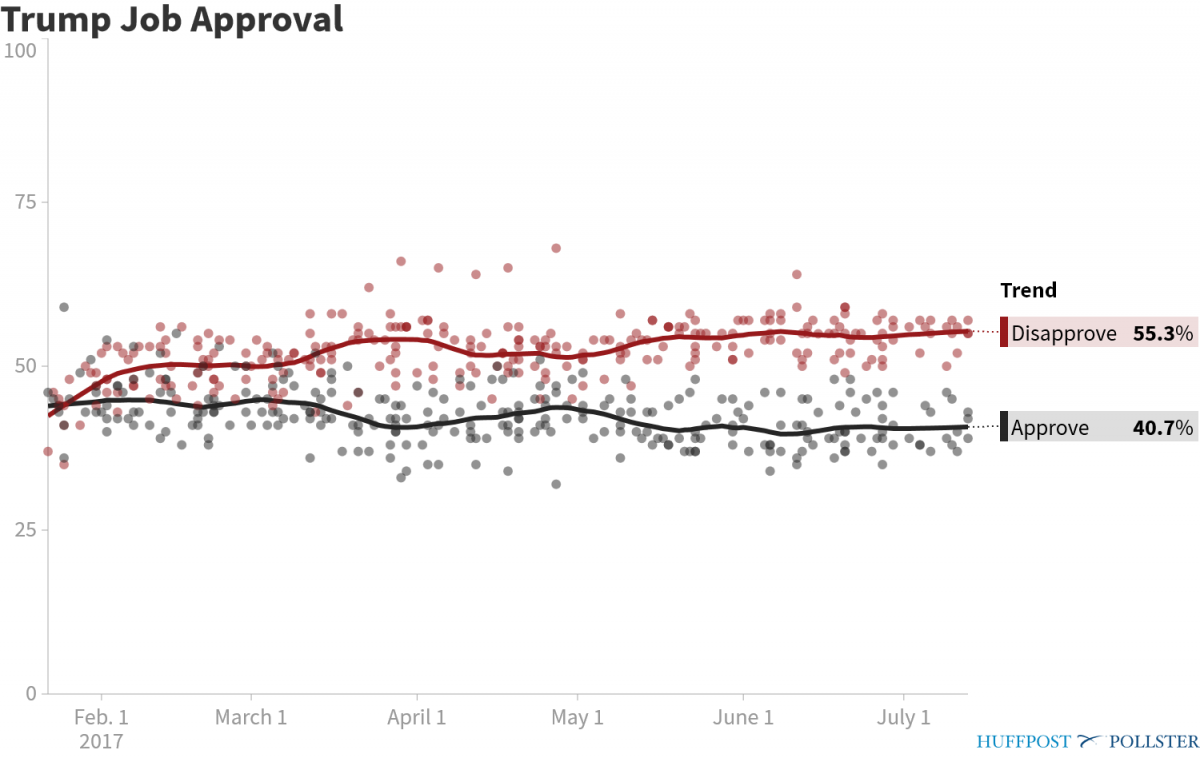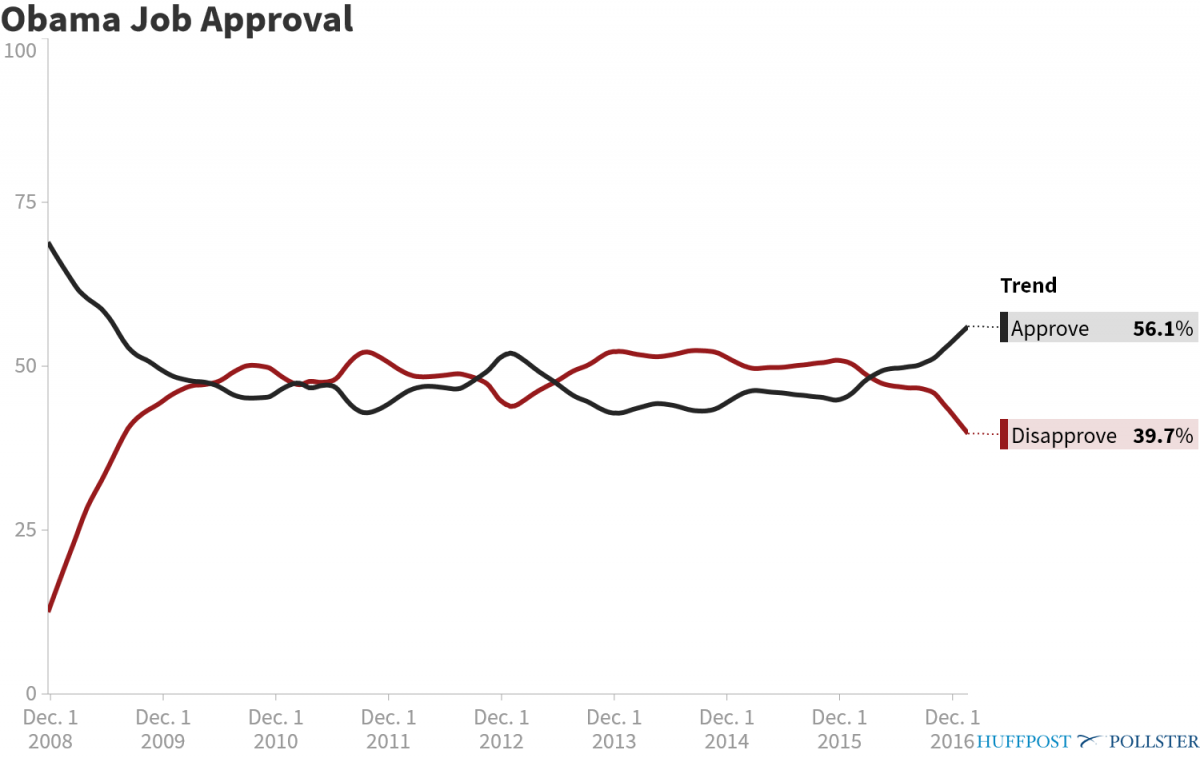Most of you, I suspect, did not find out until you woke up this morning that the Republicans’ 7-year effort to repeal Obama died by one vote in the Senate very early today. Republicans had pinned their hopes on a pared-down repeal bill – the so-called “skinny bill” – that they hoped would attract enough party support to go to a conference with the House, which passed its own repeal bill by a vote of 217-213 in early May. It was the House bill that was the basis for the Senate debate and the hope among Republicans was that by getting an amended bill to conference, party members could work out their differences and agree on legislation that would repeal and replace Obamacare. Alas, it was not to be. With Vice President Pence waiting to cast the tiebreaking vote, three Republicans: Susan Collins (Maine), Lisa Murkowski (Alaska) and John McCain (Arizona), all broke party ranks, and it was enough to send the Senate bill down to defeat 51-49.
The defections by Collins and Murkowski were no surprise, of course. They were two of only three Republican Senators (Dean Heller was the third) to vote against both the Senate counterpart to the House health care bill, and a bill designed to achieve straight repeal without a replacement of Obamacare. But heading into the final vote early this morning McCain’s vote remained a mystery. He, of course, had heightened the drama by making a dramatic return to the Senate two days before to support a motion to proceed on debating the bill, which then passed the Senate when Pence cast the tiebreaking vote. That set the stage for a series of votes to amend the House bill that unfolded over the next two days, culminating with the final vote this morning. In the lead up to that vote, McCain, along with his Senate colleague and good friend Lindsay Graham, and Ron Johnson, had expressed worry that if the pared-down “skinny” bill passed the Senate, the House might simply vote to pass it as is – something many senators, including those three, opposed. Despite assurances from House Speaker Paul Ryan that the House would, in fact, go to conference if the pared-down bill passed the Senate, McCain did not seem convinced. As many observers noted, many Senate Republicans were in the awkward position of having to vote for a bill that they did not want to see become law, in the hope that something better would result.
McCain seemed unpersuaded that this was the route to take. As Senators milled about just prior to voting on the final bill, he could be seen laughing with his Democratic counterparts. Those of us watching on C-Span tried to interpret his body language. McCain deliberately heightened the suspense by telling reporters stationed outside the Senate floor to “watch the show.” At one point he left the floor, reportedly to take a phone call from President Trump. If so, McCain remained unmoved. He returned to the floor and, in a dramatic moment, barked “No” when queried as to his vote, and marched off, producing gasps and some applause which Senate minority leader Chuck Schumer quickly tried to stifle. But the die had been cast.
This morning McCain explained that his opposition was motivated in large part by the process in which the pared-down bill had been written. “We must now return to the correct way of legislating and send the bill back to committee, hold hearings, receive input from both sides of the aisle, heed the recommendations of nation’s governors, and produce a bill that finally delivers affordable health care for the American people,” McCain’s statement read. This is probably wishful thinking on his part, if he believes it at all. It is true that Mitch McConnell, the Senate Majority leader, put this bill together entirely behind closed doors, and at the last minute, bypassing the committee system entirely – a process about which Democrats complained bitterly. But the reality is that no Democrat was going to vote for a health care repeal bill supported by Republicans no matter how transparent the process. And McConnell’s decision to craft this bill outside the traditional lawmaking system is really the culmination of a long-term process in which legislating is increasingly conducted using unorthodox means – something the late, great Barbara Sinclair masterfully documented in a series of congressional studies. The reason for this, of course, is that in an era of deeply divided congressional parties, the textbook lawmaking process taught to a generation (cue School House Rock video) has become increasingly dysfunctional, forcing party leaders to devise creative ways to shield legislation from the oppositions’ efforts to obstruct and defeat it by any means.
This may not be the ideal way to make legislative sausage. But it increasingly has become the only viable method for doing so. Despite his herculean efforts to shepherd the bill to a conference, however, McConnell and Republicans fell one vote short. For the diehards among us who study this stuff for a living, watching the Senate vote in the wee hours was about as dramatic an event as you are likely to see in Congress. (It’s too bad C-Span2 didn’t sell advertising commercials – they would have made a fortune!) Today, of course, come the recriminations. As is their wont, journalists will focus on personalities and tactics as the reason Republicans lost. Undoubtedly some will interpret McCain’s vote as revenge against President Trump, who famously called McCain a loser for being taken prisoner during the Vietnam War. It is true that Trump’s effort to pressure Murkowski, via tweets and through his Interior Secretary Ryan Zinke, after she voted no on both the repeal, and repeal and replace legislation, was clumsily handled. It’s Neustadt 101 that these threats are more effective when issued behind closed doors. But the reality is that Murkowski has felt little debt to the Republican Party since losing her party primary in 2010. (She then beat her primary opponent by running as an independent in the general election.) For her part, Collins reportedly is eyeing a bid to become Maine’s governor in 2018, and she evidently felt that being on the wrong side of repealing Obamacare in her blue state would not help the cause. In short, it’s not clear what Trump could have done to win any of these three over. That won’t stop pundits from spinning this as a reflection of his inability to bargain, of course.
But the reality is that this bill died for a more fundamental reason. Beyond a basic agreement that Obamacare needs to be fixed, Republicans were a deeply divided party. Small government Republicans like Rand Paul sought a total repeal of Obamacare, and a return to a purely-market driven system of health care – a vision shared by the House Freedom caucus. Moderates like Collins and Murkowski wanted to retain some features of Obamacare, such as the Medicaid expansion. No matter how much legislative wizardry McConnell conducted, he was never able to demonstrate a way to bridge that divide. Moving to conference merely postponed the inevitable day of reckoning. In this respect, McCain may have done the party a favor by pulling the plug on a bill that was likely destined to fail anyway. This allows Republicans to move on tax reform, an issue that in theory is more amenable to the type of horse trading that might unite the various Republican factions. We shall see.
Make no mistake about it. This was a bitter blow to McConnell, and to the Republican Party. After this morning’s vote a visibly dejected McConnell invited the Democrats to come forth with their own ideas for fixing Obamacare, but he did not sound very optimistic, and with good reason, that this route would be any more productive. In the end, however, the effort to repeal Obamacare did not fail because of McConnell’s lack of legislative legerdemain, or unwillingness to work with Democrats, or Trump’s clumsy bargaining tactics, although pundits will certainly cite all three factors. It failed because, in the words of the great political scientist Gertrude Stein, “there was no there, there.” And all the deliberation in the world didn’t seem to change that basic fact.




